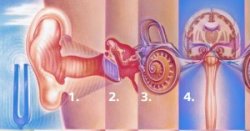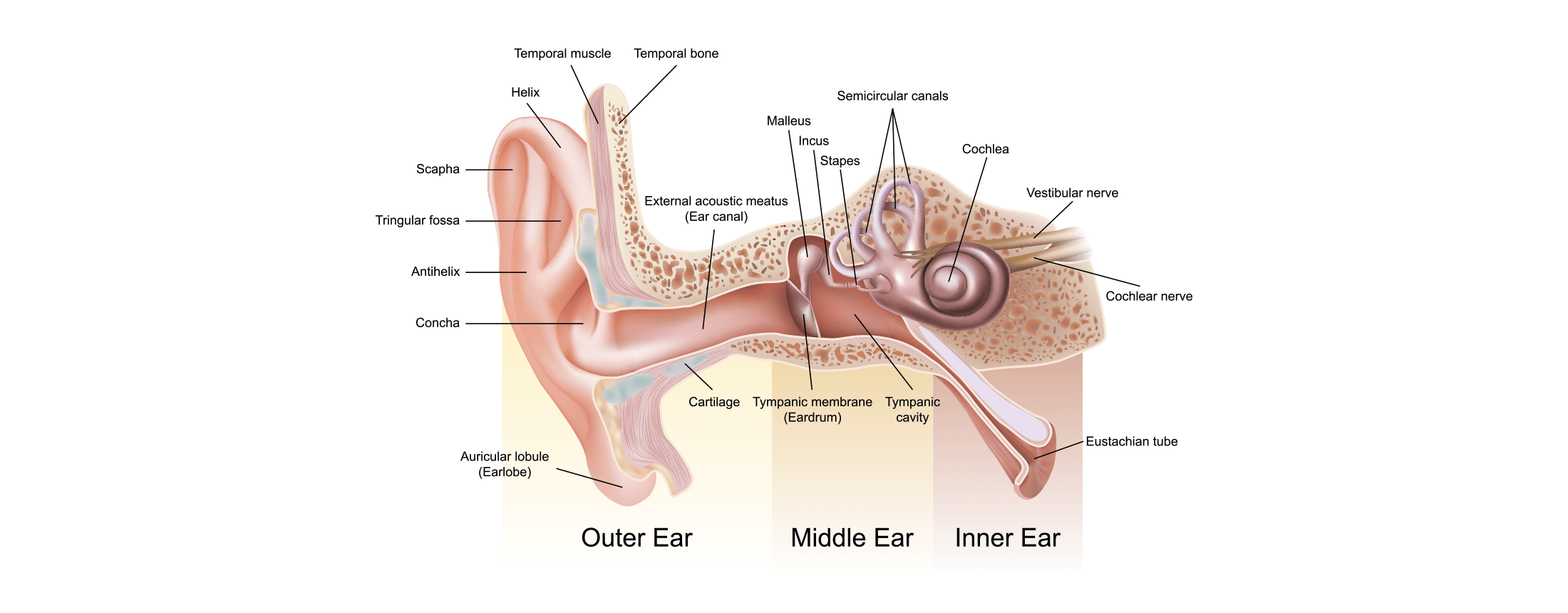The anatomy of the hearing system can be divided into four components:

- Outer ear
- Middle ear
- Inner ear
- Central auditory pathways
The Anatomy of the Hearing System: The Outer Ear
The outer ear is made up of the pinna, or auricle, and the external auditory canal. The pinna collects and funnels sound down the ear canal. The ear canal is curved and about 1 inch long in adults. It has hairs and glands that produce wax, called cerumen. Cerumen helps to lubricate the skin and keep it moist.
The Middle Ear
The eardrum (tympanic membrane) is a membrane at the inner end of the ear canal. On that inner side of the tympanic membrane is an air-filled space called the middle ear cavity. The vibrations of the tympanic membrane are transmitted through the middle-ear bones (ossicles): the malleus (“hammer”), incus (“anvil”), and stapes (“stirrup”). The stapes footplate transmits the vibrations into the inner ear.
The Inner Ear
The inner ear has two divisions: one for hearing, the other for balance. The hearing division consists of the cochlea and the nerve of hearing. The cochlea is a snail-shaped, bony structure that contains the sensory organ for hearing called the organ of Corti. The organ of Corti releases chemical messengers when the vibrations from the stapes activate its tiny hair cells. These then excite the nerves of hearing that carry sound to the brain.
The Central Auditory Pathways
The central auditory system is a complex network of neural pathways in the brain that is responsible for sound localization, speech understanding in noisy listening situations, and other complex sounds, including music perception.
Beyond the anatomy of the hearing system is the process of hearing.
Sound is transformed into mechanical energy by the tympanic membrane. It is then transmitted through the ossicles to the inner ear where it is changed again into hydraulic energy for transmission through the fluid-filled cochlea. The cochlea’s hair cells are stimulated by the fluid waves, and a neurochemical event takes place that excites the nerves of hearing. The physical characteristics of the original sound are preserved at every energy change along the way until this code becomes one the brain can recognize and process. Hearing loss misleads our brain with a loss of audibility and may also introduce distortion into the message that reaches the brain. Changes in the effectiveness of the brain to process stimuli, from head trauma, disease, or from aging can result in symptoms that mimic hearing loss. The ears and the brain combine in a remarkable way to process neural events into the sense of hearing. Perhaps it’s fair to say that we “hear” with our brain, not with our ears!



